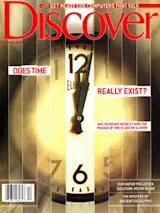People have embraced technology as a means of making music for thousands of years, but technology is rarely the subject of a major classical composition. Indeed, the few notable exceptions have tended to befuddle music lovers. Alexander Mossolov's The Iron Foundry, a 1923 experimental piece filled with the sounds of whirring machinery, was dismissed by one critic as "music of a metallic nightmare." The response was even more derisive to George Antheil's Ballet Mécanique, which featured airplane propellers and a siren. At the 1927 New York premiere, the audience pelted the orchestra with paper planes folded from programs.
Composer Steve Reich and video artist Beryl Korot have received much warmer receptions from the audiences in New York, San Francisco, and other cities who recently previewed Hindenburg, the first act of their opera Three Tales. By 2002 Reich and Korot plan to stage an epic musical dramatization of three pivotal technological ...














